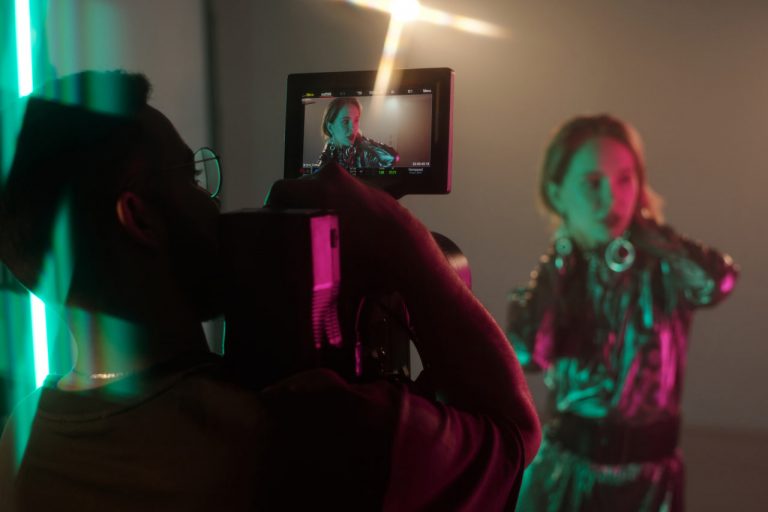Understanding Three-Point Lighting: The Foundation of Cinematic Visuals
What is Three-Point Lighting? Three-point lighting is a fundamental lighting technique widely used in video…
What is Three-Point Lighting?
Three-point lighting is a fundamental lighting technique widely used in video production, photography, and filmmaking. It involves using three distinct light sources positioned strategically around the subject to create depth, dimension, and a visually pleasing balance of light and shadow. This classic setup forms the foundation for cinematic visuals, allowing videographers and filmmakers to highlight subjects clearly while adding mood and texture to the scene.
The Three Components of Three-Point Lighting
1. Key Light
The key light is the primary and usually the strongest light source in the setup. It defines the overall exposure and creates the dominant shadows on the subject. Positioned at an angle to one side of the camera, the key light shapes the subject’s form and brings out the essential details. The intensity and placement of the key light are crucial, as they set the tone and feel of the shot, whether dramatic or soft.
2. Fill Light
The fill light complements the key light by reducing the shadows it creates. Positioned opposite the key light, the fill light is typically softer and less intense. Its main role is to lighten the shadows without eliminating them completely, preserving some contrast and depth. Adjusting the fill light’s brightness allows control over how harsh or gentle the overall lighting appears. Too much fill light can flatten the image, while too little can create overly dramatic shadows.
3. Back Light (or Rim Light)
The back light, placed behind the subject, adds separation between the subject and the background. Often called a rim light or hair light, it creates a subtle glow or highlight around the edges of the subject. This light helps define the subject’s silhouette and prevents it from blending into the background, adding depth and a three-dimensional quality to the image. The back light enhances the overall composition by giving a polished, professional look.
The Importance of Balance and Positioning
The effectiveness of three-point lighting depends on the careful balance and positioning of each light. The angle, distance, and intensity must work together harmoniously. Typically, the key light is set at a 45-degree angle from the subject and slightly above eye level, mimicking natural sunlight. The fill light mirrors the key light’s position on the opposite side but with less power, and the back light is placed high behind the subject to create the desired rim effect. Experimenting with these variables allows for creative adjustments tailored to the mood and style of the scene.
Variations and Creative Uses of Three-Point Lighting
While the traditional three-point setup provides a solid foundation, creative filmmakers often modify it to suit their narrative needs. For instance, in high-contrast or noir-style scenes, the fill light may be minimized or removed entirely to create dramatic shadows and tension. Colored gels can be added to any of the lights to evoke certain moods or times of day. Softboxes, barn doors, and grids are often used as modifiers to shape and control the light further. These variations demonstrate the flexibility of three-point lighting as both a technical and artistic tool.
Common Mistakes to Avoid
A frequent mistake when using three-point lighting is over-lighting the subject, which results in a flat and unnatural appearance. It’s important to maintain shadows and highlights to preserve depth. Another common error is placing the back light too close or too far, which can create harsh outlines or no separation at all. Additionally, neglecting the fill light can make the image too stark, while too much fill can wash out textures and details. Careful adjustments and testing on set are essential to achieving the perfect balance.
Why Three-Point Lighting Remains a Staple
Despite advances in lighting technology and techniques, three-point lighting remains a staple in cinematic visuals because of its simplicity and effectiveness. It offers a reliable framework that can be adapted for various genres, lighting conditions, and artistic intentions. Learning this technique is essential for anyone looking to master visual storytelling, as it teaches fundamental concepts about light behavior, shadow control, and spatial perception.




